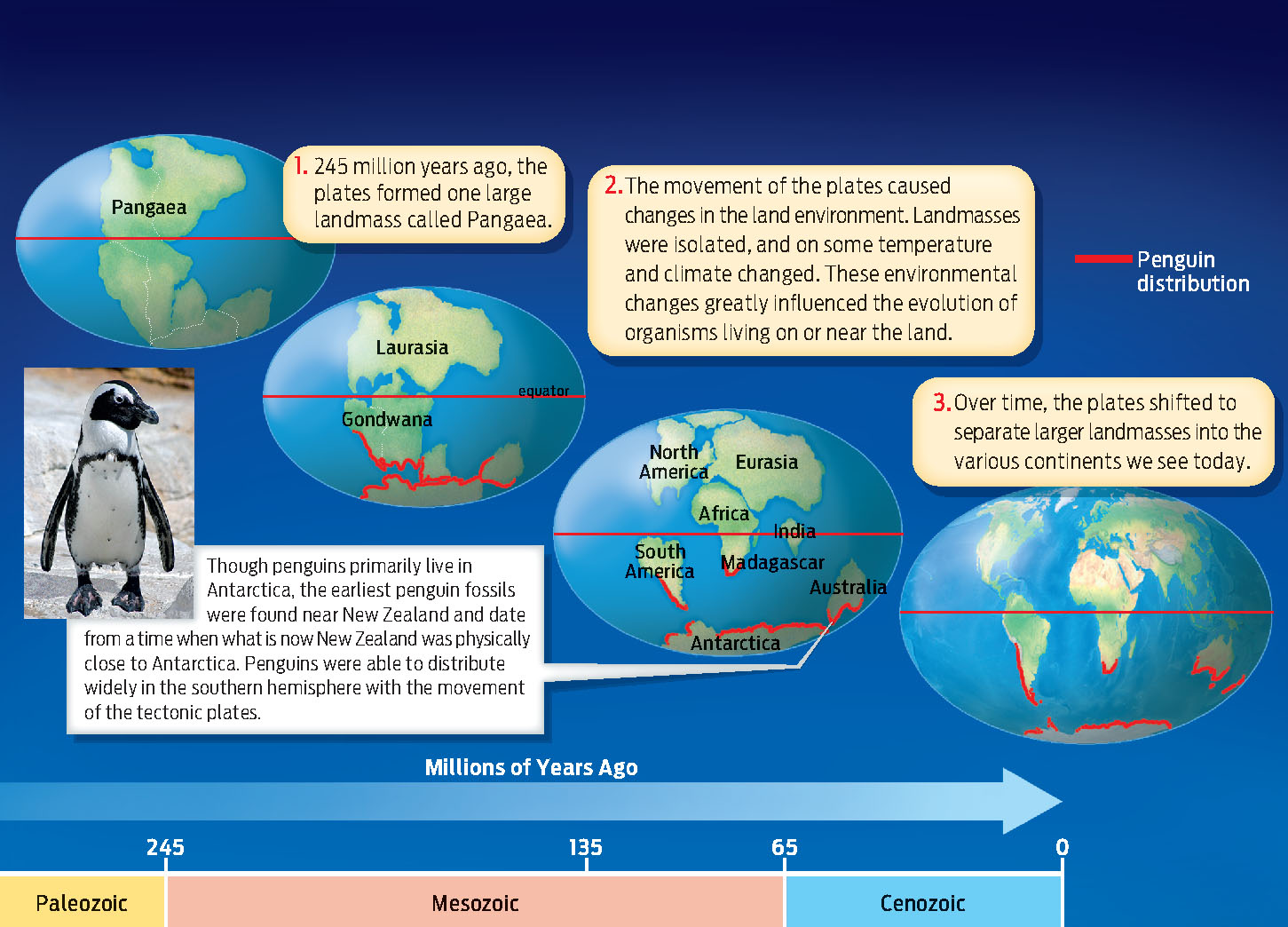BIOGEOGRAPHY
 Why are there no penguins at the north pole, and no polar bears at the south pole?
Why are there no penguins at the north pole, and no polar bears at the south pole?
BIOGEOGRAPHY The study of how organisms are distributed in geographical space.
ANSWER: In terms of habitat, the north pole and the south pole are pretty similar: cold, snow-capped, and surrounded by ocean. Yet polar bears are found only in the north and penguins are found only in the south. Why? If environmental conditions were the only factors, then you might expect that polar bears and penguins would do equally well in either habitat and should therefore coexist in the same location (as they sometimes do in TV commercials). But the distribution of organisms around the world reflects the details of their evolutionary history—their connection in time and space to the species they are related to and descended from. In fact, this was one of the main pieces of evidence that Darwin used to support his theory of descent with modification. His voyage on the Beagle was in a sense the first work in biogeography, the study of the natural geographic distribution of species. Biogeography seeks to explain why particular organisms are found in some areas and not others.
381
PLATE TECTONICS The movement of Earth’s upper mantle and crust, which influences the geographical distribution of landmasses and organisms.
Penguins, for example, make their home primarily in the southern hemisphere, especially in the coastal regions of Antarctica. According to fossil evidence, penguins first appeared about 65 million years ago near what is now southern New Zealand. Polar bears, on the other hand, live only in the Arctic. From fossil and DNA evidence, scientists conclude that polar bears evolved from brown bears roughly 150,000 years ago in Siberia, when that region became isolated by glaciers. Both penguins and polar bears have thus lived in their respective habitats for a long time, and it’s easy to understand why they haven’t migrated from one pole to the other—obstacles include great distance and the warmer oceans separating their icy habitats. But how did they get to their homes in the first place?
Though today they are at opposite ends of Earth, the Arctic and Antarctic landmasses weren’t always so far apart. In fact, 250 million years ago, the continents were bound together in one large landmass that geologists named Pangaea. At that time it was hypothetically possible for populations of land-dwelling animals to roam far and wide over the entire land surface. But because of a geologic process called plate tectonics, over time this giant landmass split and split again, forming the continents of the northern and southern hemispheres. In the process, the ancestors of penguins and polar bears were isolated from each other, as if on different lifeboats cast out to sea. Because the animals we know today as penguins and polar bears evolved from their ancestors after the split of the northern and southern landmasses, they are found today at different ends of Earth. Plate tectonics also helps explain how a flightless bird such as a penguin could spread to four distant continents in the south hemisphere: the landmasses were much closer then (INFOGRAPHIC 17.4) .
Earth’s landmasses are on plates that float on Earth’s upper mantle and crust. Over geologic time, these plates have moved with respect to one another, affecting the climate as well as the ability of organisms to move among landmasses. The geographic distribution of organisms on Earth today reflects both adaptations to the local environment as well as the geography of their evolutionary origins.

Tectonic plates continue to move, occasionally causing dramatic events such as earthquakes and volcanic eruptions. GPS measurements, used to track the direction and velocity of plate movement, show that the rate of movement for different plates ranges from 2.5 to 15 cm per year. Earth is a work in progress.